This is the second in a series about the latest edition of “The Infinite Dial.” (Read the first story.)
As already noted, the new report from Edison Research and its partners contains surprises as well as some of what you’d expect.
The continued growth of certain types of consumer electronics, in particular smart devices, is to be expected. But the numbers suggest incremental, not meteoric growth. Is the arc heading towards a plateau? If so, what are some of the restraining forces?
We’ll leave smartphones in their own category (as Edison notes, phones now may largely be considered a replacement for computers) and look at the others.
Smart watches are bringing up the rear; the research suggests about 60 million users. The past year has seen the percentage of the population owning this device rise from 20 to 24 percent of Americans 12+.
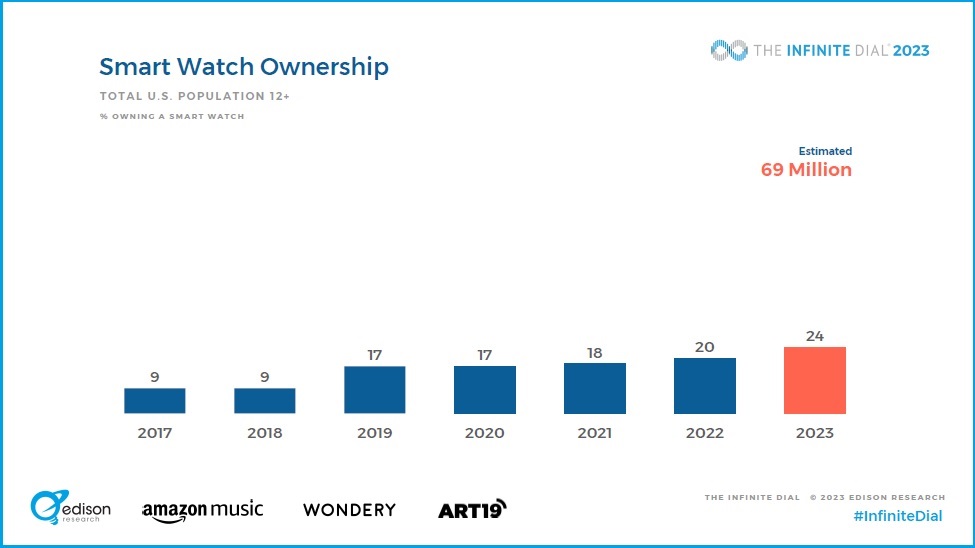
According to smartwatchreview.org, the leading brands are Apple, Fitbit and Spade & Co. No doubt, activity tracking and health monitoring features are behind much of this growth, as they offer the convenience of gathering a host of your biometrics, crunching numbers and displaying trends. At the same time, wearing a Bluetooth-enabled device on your wrist raises concerns for some consumers about health risks that might be posed.
Smart speakers receive the bulk of research and discussion in this category and were a source of much excitement and consternation among radio broadcasters when they first boomed. But their growth seems close to a plateau. There are an estimated 103 million users or 36 percent of the population, the new report finds.
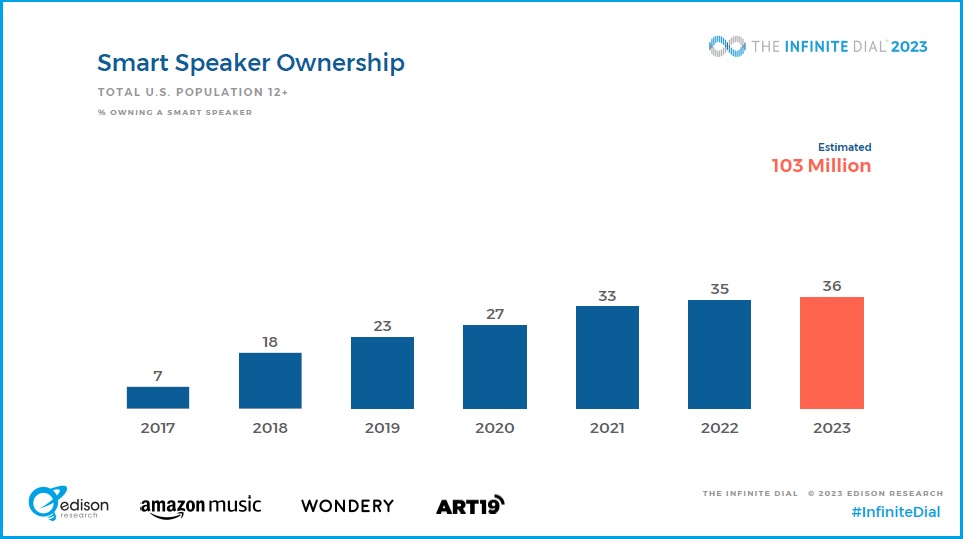
Amazon Alexa continues to lead this particular pack, with 28 percent of smart speaker owners. Google Nest/Home devices have 12 percent, with the third-ranked choice, Apple HomePod, drawing a mere 2 percent.
But the number of speakers per household among the user population continues a steady increase, with 38 percent of owners now having three or more.
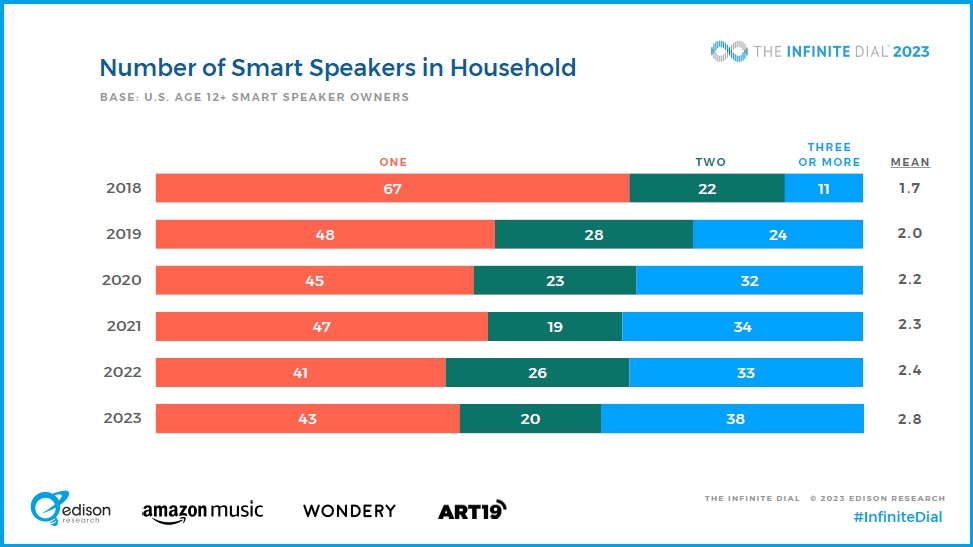
Smart speakers are significant not only for the convenience they bring, but because they marked the beginning of the voice-activated internet and voice-activated tech in general. This technology is expected to find more applications in the future. This may be small consolation to consumers who want to connect with a real human and get problems resolved quickly.
Although not a smart device, next in The Infinite Dial’s technology ranking is Bluetooth-enabled wireless headphones, a relative newcomer to the category, with 166 million users, or 58 percent of the population.
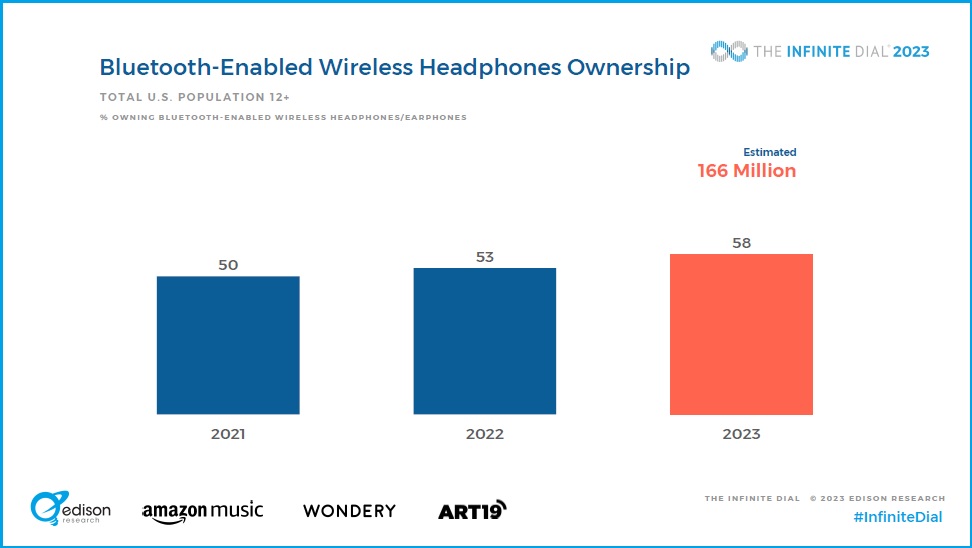
These bring convenience, with no cords to get tangled up in, or eventually become flaky and intermittent. As with smart watches, the convenience of Bluetooth-enabled wireless headphones must be balanced with concerns about electromagnetic radiation (to the point where EMF-blocking earbuds are a thing).
Leading this grouping in terms of the number of owners (though still lagging smartphones) are smart TVs, claiming 200 million users; they are owned by 70 percent of us, according to Edison’s research, up from 62 percent last year.
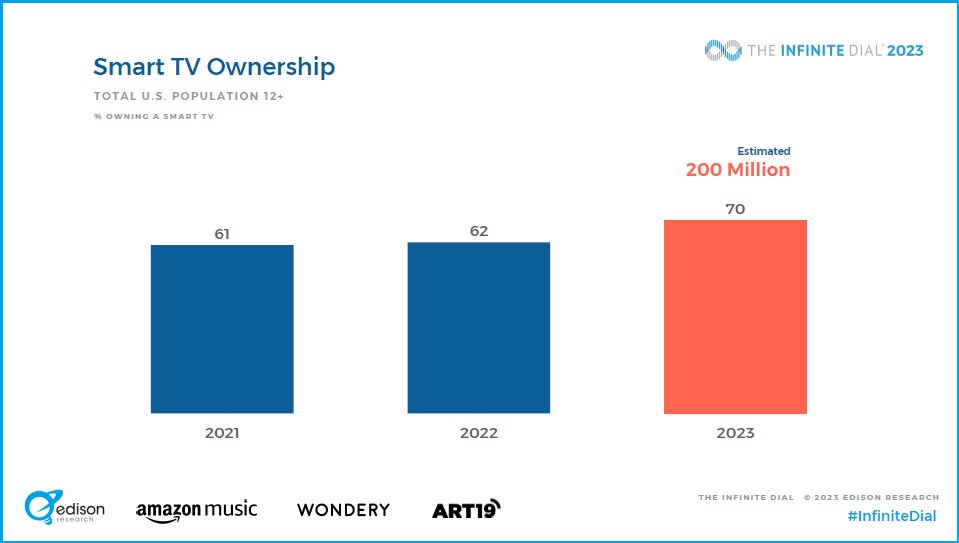
To be fair, it should be pointed out that conventional TVs are being slowly phased out to the point that it’s becoming hard to find a TV that isn’t “smart.”
Smart TVs allow you to tap into streaming media, enabling you to watch your favorite shows and movies at any time — on Hulu, Netflix, HBO, MAX and Disney+. Numerous gaming options are also available.
Restraining forces common to the growth of many consumer electronics devices may be health and/or privacy concerns. Privacy issues were first raised shortly after smart speakers were introduced, which were documented by another media research firm.
Consumer advocate groups posed questions to smart speaker manufactures, such as who is listening on the other end, how long are recordings kept, who has access, and who is the information being sold to? Few meaningful answers were forthcoming from manufacturers. The same questions may be relevant to smart watches and smart TVs as well. And as noted, EMF concerns have long been raised for all types of wireless devices. Experts note that some guidelines do not account for the potential risks of prolonged and cumulative exposure, or to the proximity of the accessory to the brain, in the case of headsets.
The Infinite Dial study uses a random probability telephone sample of Americans ages 12 and older, to learn about consumption of digital audio and other digital media. In January 2023, telephone interviews were conducted with 1,500 respondents selected via Random Digit Dial sampling through both landline phones and mobile phones. The survey was offered in Spanish and English.
Tomorrow we will look at the report’s findings about in-car consumer behavior.







